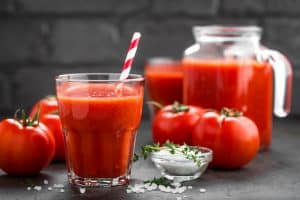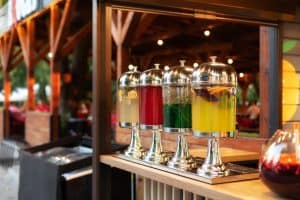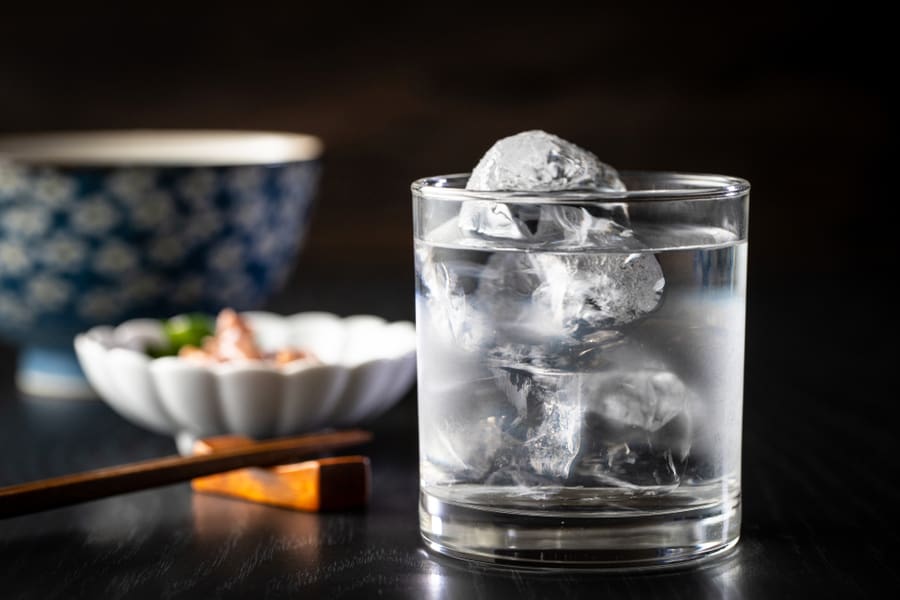
Shochu is an indigenous distilled liquor from Japan that has been between 500 and 600 years. It is primarily manufactured in Japan’s southernmost provinces of Okinawa and Kyushu, where it was initially invented.
Shochu is usually 20–25% ABV (alcohol by volume); however it can legally be up to 45% ABV. With over 50 possible base ingredients to pick from and hundreds of ways to serve it, Shochu is an all-rounder that may be served separately or with various cuisines.
You might wonder, how do you drink Shochu?
There are seven basic ways you can drink Shochu:
- Neat;
- On the rocks;
- With cold water;
- Served with hot water;
- Premixed with water;
- Premixed with water and served warm;
- With soda water.
First, we’ll delve into the wonderful ways you might want to serve and drink Shochu. Afterward, we’ll look at the different Shochu types before moving on to the ingredients.
How To Drink Shochu
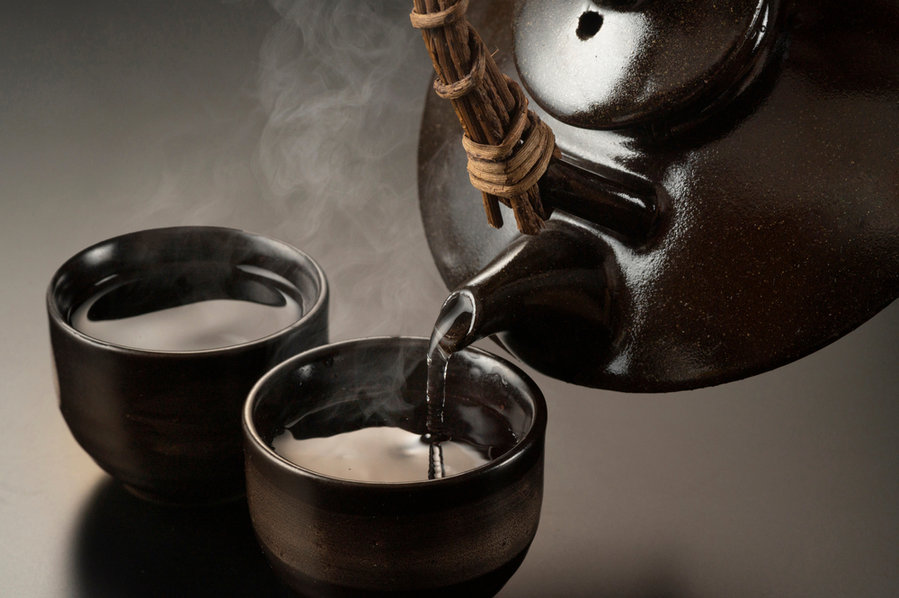
How you serve Shochu depends on the type of Shochu you drink and serve. Let’s examine them individually below.
Straight or Neat
Drinking Shochu neat is the best way to experience the different flavors of the drink. With time your nose and palate will develop, and you’ll be able to distinguish which ingredient was used to make it.
Some pointers:
- Always serve neat Shochu with a water chaser;
- Clean-tasting Shochu should be served chilled;
- Rich and complex varieties are best served at room temperature allowing the drink to show its full range of flavor and aroma.
Rokku – On the Rocks
The two best types on the rocks are Mugi Shochu (made from barley) and Imo Shochu (made from sweet potato).
The best way to enjoy your Shochu is to use a large, clear ice cube—smaller ice cubes will melt too quickly and dilute the Shochu too fast.
Put the ice cube into the glass first to allow it to cool the glass. The ice cube will melt a bit, so discard the melted water before pouring the Shochu.
With the water removed, pour the Shochu directly onto the ice cube; this allows it to cool immediately.
Mizuwari – Served With Cold Water
This method works well with Mugi Shochu (barley) or Awamori Shochu (made from Thai rice). Because water has a higher density than Shochu, the Shochu should be poured into the glass first and topped up with the water.
In Japan, the typical ratio is 3:2 (60% Shochu and 40% water), but in other parts, it can be as little as 3:7 (30% Shochu and 70% water).
You can adjust the water or Shochu if the drink is too strong or too weak for your taste.
Maewari – Premixed With Water
Maewari is a variation of Miziwari. The water and Shochu are mixed for 24 hours before serving Shochu to guests.
When invited to drink Maewari, it is a gesture of respect towards the guest. Traditionally, it is served to significant guests.
Oyuwari – With Hot Water
Hot water does not mean boiling water! Hot water, around 70ºC (158ºF), should be used.
Pour hot water into the cup, and then add Shochu. The recommended ratios are six parts Shochu to 4 parts water or five parts Shochu to 5 parts water.
Perfect for those chilly winter evenings!
Premixed and Warmed
This is a combination of Maewari and Oyuwari. The ratios are the same as with Oyuwari—either 6:4 or 5:5.
The Shochu and water are mixed and allowed to rest for 24 days. This version is served at 113°F or 45°C.
Traditionally the Shochu-water mixture is heated in a small earthenware pot that’s placed into boiling water until the desired temperature is reached.
Sodawari – Mixed With Soda Water
The Japanese call this the “evil way of drinking Shochu,” and it is probably a Western influence that comes from whiskey and soda water (i.e., the Whiskey Highball).
Either way, it makes a refreshing drink, and the carbonated water makes it easier to taste the different flavors.
What is Shochu?
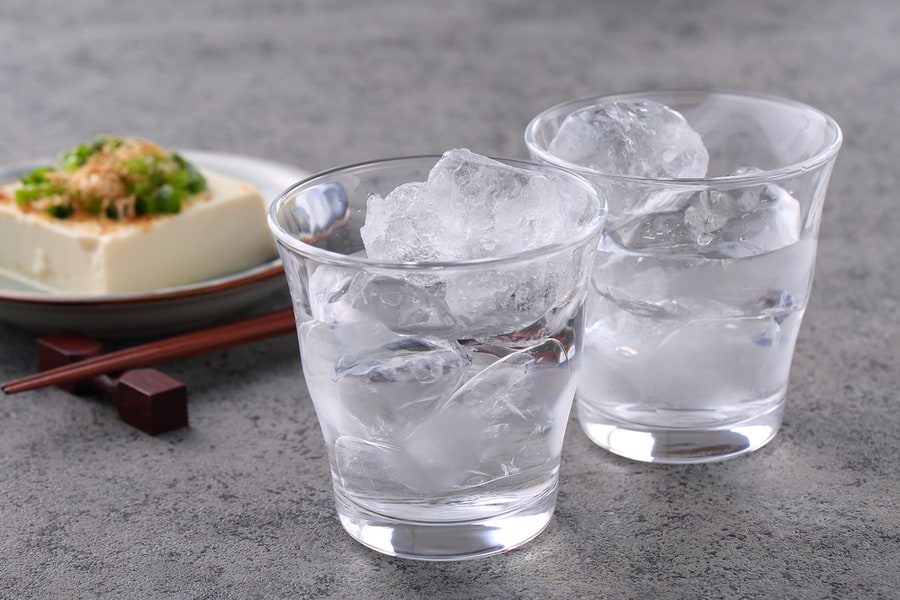
Shochu hails from Japan and is a distilled beverage made chiefly of grains such as rice, barley, and potatoes. The alcohol content usually ranges between 25% and 37%.
Sochu is available in three varieties, namely: Otsurui Shochu (乙類焼酎), Korui Schochu (甲類焼酎), and blended Shochu or Konwa Shochu. Let’s examine the three types below.
1. Otsurui Shochu
Otsurio Shochu is single-distilled, and the alcohol concentration is 45% or less. This traditional Japanese technique has been used since the 14th century. It is only distilled once it has a fuller flavor, and the natural flavor components are prominently tasted.
2. Korui Shochu
Korui Shochu debuted long after Otsurui Shochu. It was produced initially after World War II and was created using continuous distillation. Korui Shochu has a lower alcohol concentration (35% or less) and a crisper, easier-to-drink flavor. Korui Shochu is ideal for people who want a dry taste or are new to Shochu.
3. Konwa Shochu
If you are still deciding which one you prefer, you can also try a blended Shochu. It is a mix of the two, depending on which one is the dominant one—it is either called Otosurui-Korui Konwa Shochu or Korui-Otosurui Konwa Shochu.
What Ingredients Are Used?
There is a myriad of ingredients that can be used to produce Shochu. Still, we’ll look at some of the basic ones below:
- Rice—the aroma is similar to sake. Japanese rice (kome) or Thai rice (amawari) can be used
- Sweet potato (imo)—soft sweetness, best enjoyed served hot
- Barley (mugi) is a light, mild-tasting Shochu that is easy to drink. It can be cask aged and have a taste that reminds one of single malt whisky.
- Buckwheat (soba) —delivers a lingering sweet and fruity aroma; it also tastes slightly milder than the barley (mugi) variant.
- Brown sugar (kokuto)—although it is distilled from sugar, the taste is not as sweet as one would expect, but rather a dry and clean taste.
- Shiso herb—made from aromatic Shiso leaves with a beautiful scent and soft flavor of Shiso leaves.
Conclusion
Experimenting with various styles of Shochu is the key to enjoying and finding your preferred drinking style. You’ll quickly realize that certain Shochus is best enjoyed neat, while others are best rokku.
Yet, others are best, mizuwari or oyuwari… Some are best kept buried in a unique cocktail.
Kampai!


